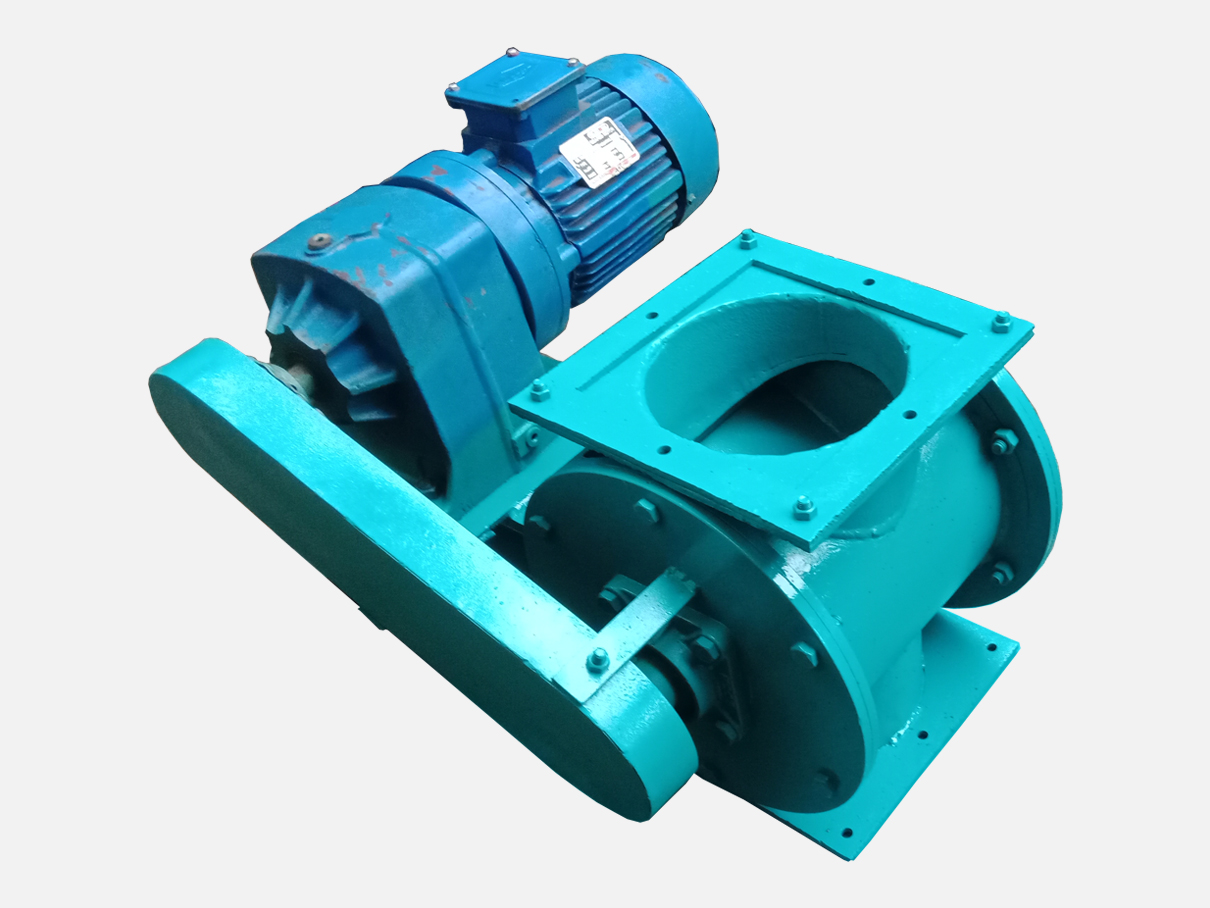
A rotary feeder, also known as a rotary valve or rotary airlock, is a type of mechanical device commonly used in industrial and bulk material handling applications. Its primary function is to control the flow of materials, typically powders, granules, or other bulk solids, between two different areas of a system while maintaining an airtight or controlled environment. Rotary feeders are used in a wide range of industries, including agriculture, food processing, pharmaceuticals, chemical manufacturing, and more.
Key features and components of a rotary feeder include:
Rotor : The central component of a rotary feeder is the rotor, which is typically a cylindrical or tapered drum with vanes or blades that extend radially from the center. The rotor rotates within a housing, and its design and speed determine how material is metered and transferred through the feeder.
Inlet and Outlet Ports : Rotary feeders have an inlet port where material enters and an outlet port through which the material is discharged. The inlet and outlet ports can be customized to fit the specific requirements of the application.
Housing : The housing encloses the rotor and provides a sealed or controlled environment. The design of the housing ensures that material is prevented from flowing back into the inlet.
Drive Mechanism : Rotary feeders are typically driven by an electric motor or a pneumatic or hydraulic system, which rotates the rotor at a controlled speed.
Seal : Rotary feeders often include a seal to maintain an airtight or controlled environment within the system. The seal prevents air or gases from flowing between the inlet and outlet ports, which is important in processes where pressure differentials or contamination control are critical.
Clearances and Tolerances :The rotor and housing are designed with specific clearances and tolerances to ensure efficient material flow while preventing leakage or clogging.
Applications of rotary feeders include:
Bulk Material Handling : Rotary feeders are commonly used to meter and transfer bulk materials such as grains, powders, pellets, and granules in various industries.
Pneumatic Conveying : In pneumatic conveying systems, rotary feeders are used to introduce materials into a pressurized conveying line without disrupting the air or gas flow.
Dosing and Metering : Rotary feeders are used for accurate dosing and metering of materials into various processes, such as mixing, blending, and batching.
Dust Control : They are employed to maintain dust control in material handling systems by sealing the transfer points and preventing airborne dust.
Feeding Material into Process Equipment : Rotary feeders are used to introduce materials into equipment like crushers, mills, and dryers.
Hazardous Environments : In applications where materials are hazardous, toxic, or sensitive to contamination, rotary feeders help maintain a controlled environment.
Rotary feeders are chosen for their ability to provide a consistent and controlled flow of materials in various industrial processes. Their design and construction can vary to accommodate different materials and application requirements, making them a versatile component in material handling and processing systems.

